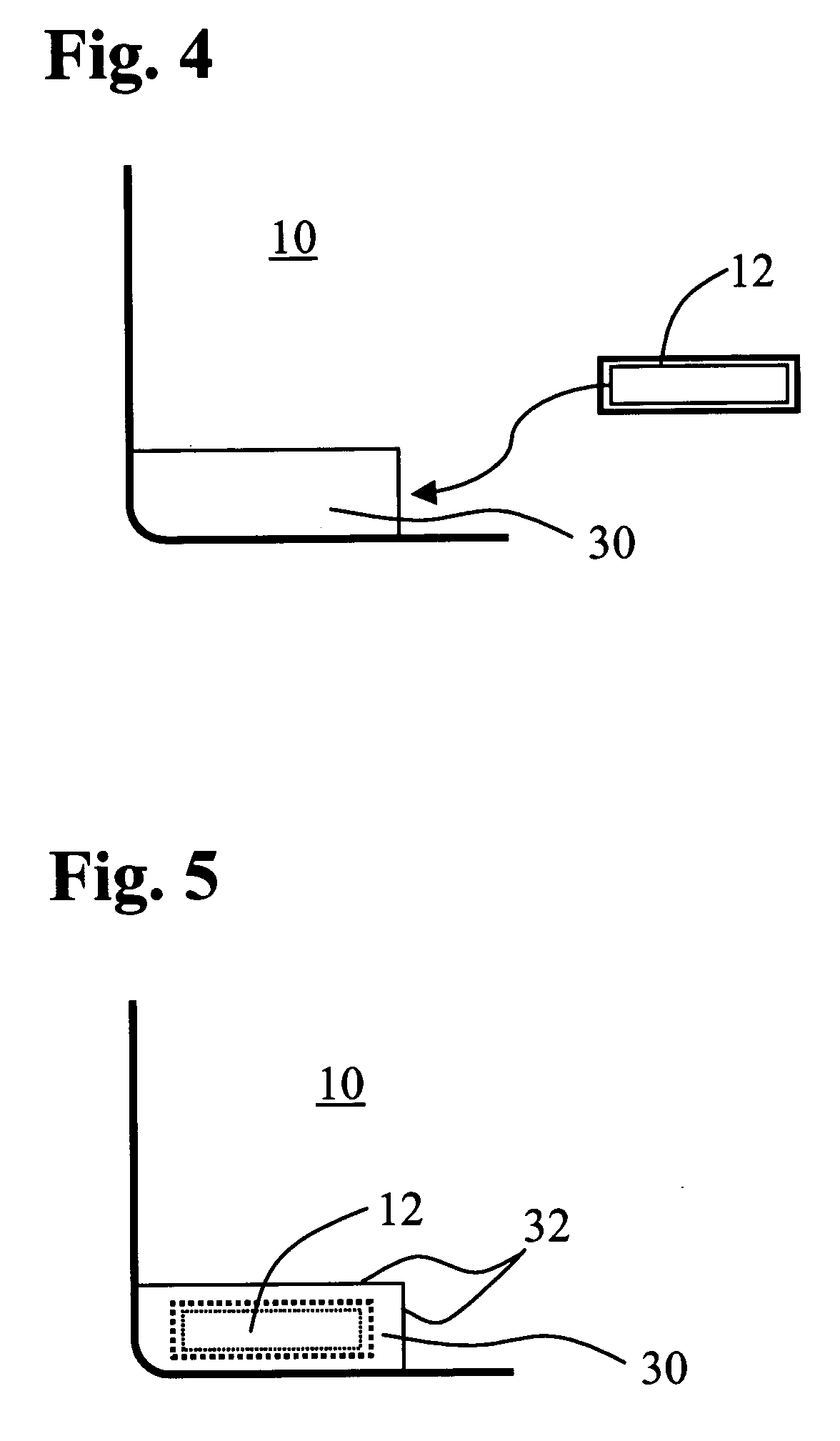Attachment of electronic tags to surgical sponges and implements
a surgical sponge and electronic tag technology, applied in the field of electronic article surveillance systems, can solve the problems of patient pain, infection, intestinal obstruction, death, etc., and achieve the effect of preventing injury
- Summary
- Abstract
- Description
- Claims
- Application Information
AI Technical Summary
Benefits of technology
Problems solved by technology
Method used
Image
Examples
Embodiment Construction
[0032] The present invention provides a surgical implement having attached thereto an externally detectable marker. The surgical implement is any of a wide variety of devices appointed to be placed into a surgical wound cavity during a surgical procedure, typically including sponges, gauzes, instruments, probes, and clamping or cutting devices. The remote detectability of the marker allows detection and removal of the implement prior to completion of the surgery, thereby eliminating the severe consequences that arise from retained articles. Referring generally to FIGS. 1 to 15 of the drawings, there are shown a variety of means for affixing an externally detectable marker to a surgical implement.
[0033] The marked items of the invention may be used in conjunction with any EAS system capable of sensing and remotely detecting a marker and compatible with the requirements of safe operation in the context of a medical venue. A wide variety of such EAS systems are currently known, includ...
PUM
| Property | Measurement | Unit |
|---|---|---|
| adhesive | aaaaa | aaaaa |
| pressure | aaaaa | aaaaa |
| pressure- | aaaaa | aaaaa |
Abstract
Description
Claims
Application Information
 Login to View More
Login to View More - R&D
- Intellectual Property
- Life Sciences
- Materials
- Tech Scout
- Unparalleled Data Quality
- Higher Quality Content
- 60% Fewer Hallucinations
Browse by: Latest US Patents, China's latest patents, Technical Efficacy Thesaurus, Application Domain, Technology Topic, Popular Technical Reports.
© 2025 PatSnap. All rights reserved.Legal|Privacy policy|Modern Slavery Act Transparency Statement|Sitemap|About US| Contact US: help@patsnap.com



